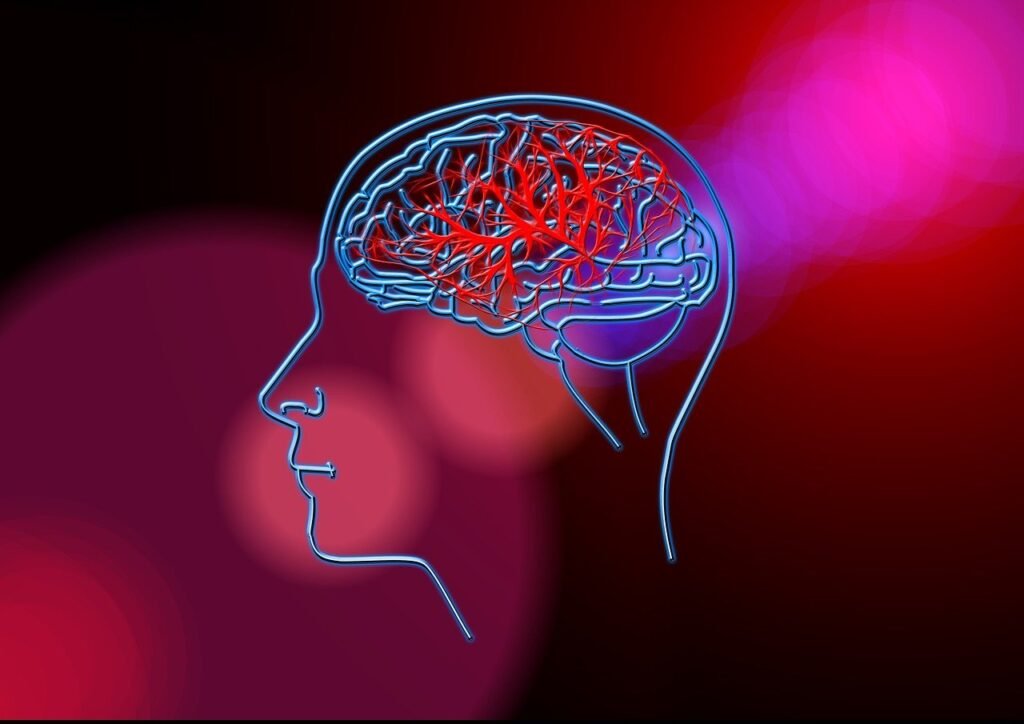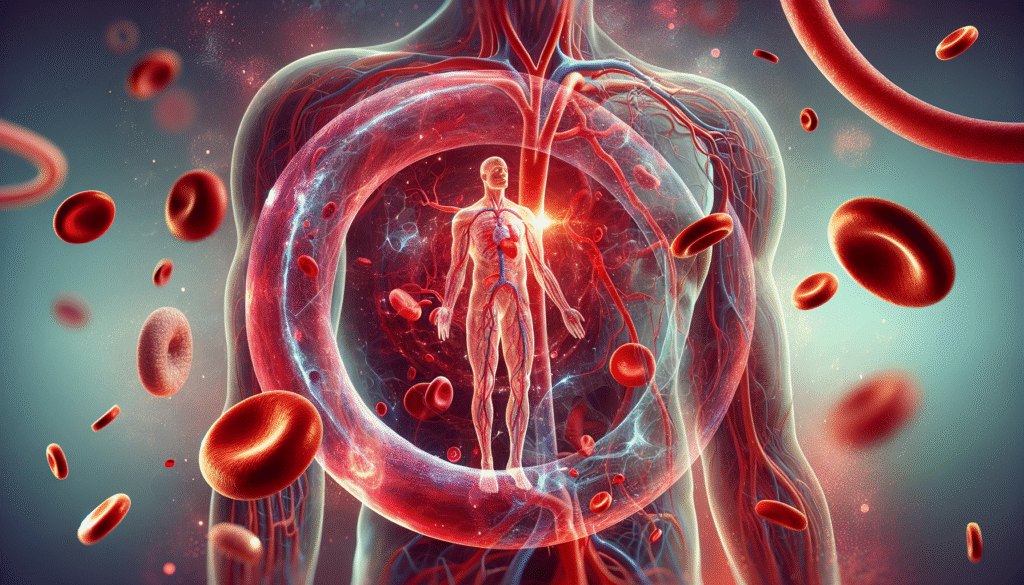Have you ever considered how blood flow affects your daily life, your workouts, or even your recovery after intense activities? Understanding how your circulatory system operates can change the way you think about physical performance and health.

Understanding Blood Flow: The Lifeblood of the Body
Blood flow is fundamental for delivering nutrients and oxygen to all parts of your body. Think of it as the highway system for your body’s various components. It’s essential for maintaining health, supporting organ function, and enabling effective recovery, especially after intense physical activities.
When you engage in any physical activity, your muscles require a significant amount of oxygen and nutrients. Blood flow directly influences how efficiently these elements are transported to your muscles while removing waste products like carbon dioxide. The rate at which blood moves through your circulatory system can significantly affect how you feel and function in your everyday life.
The Mechanics of Blood Flow
Blood flows through the body via a network of arteries, veins, and capillaries. This system’s design is marvelous because it allows blood to circulate in a continuous loop, reaching every corner of your body. Here’s a basic breakdown of how it works:
| Component | Function |
|---|---|
| Arteries | Carry oxygen-rich blood away from the heart. |
| Veins | Bring deoxygenated blood back to the heart. |
| Capillaries | Microscopic vessels where gas and nutrient exchange occurs. |
Your heart acts as a pump, pushing blood through arteries, while veins carry blood back to the heart. Capillaries connect arteries and veins, facilitating the exchange of oxygen, carbon dioxide, nutrients, and waste products.
Factors Affecting Blood Flow
Several physiological factors can influence your blood flow, which can be both beneficial and problematic. Here are a few key ones:
- Heart Rate: A faster heart rate usually means more blood is being circulated. Think about how your heart races during a workout.
- Vascular Resistance: The narrower your blood vessels, the harder your heart has to work to pump blood through them.
- Blood Volume: More blood volume typically means more blood flow. Dehydration can reduce this volume.
- Temperature: Heat typically causes blood vessels to dilate, enhancing blood flow, while cold does the opposite.
Understanding these factors helps you appreciate how vital managing your health and fitness is—not just for performance but for recovery too.
Vasoconstriction: A Double-Edged Sword
Vasoconstriction refers to the narrowing of blood vessels, which plays a significant role in regulating blood flow and, consequently, your overall circulation.
What Causes Vasoconstriction?
There are various triggers for vasoconstriction, some of which can be beneficial, and others less so:
- Cold Temperatures: Your body conserves heat by narrowing blood vessels in the extremities.
- Stress: When under pressure, your body releases hormones like adrenaline that cause blood vessels to narrow, redirecting blood flow to vital organs and muscles.
- Hormones: Certain hormones can trigger vasoconstriction, including norepinephrine and angiotensin II.
Understanding these causes helps you see how your body reacts to different stimuli, which is crucial for anyone interested in health, fitness, or recovery strategies.
The Role of Vasoconstriction in Recovery
While vasoconstriction might seem detrimental at first, especially during recovery, it can actually serve important roles. After intense exercise, vasoconstriction helps reduce blood flow to muscles that may be damaged or inflamed. This temporary reduction can prevent excessive swelling and promote healing in certain circumstances.
However, prolonged vasoconstriction could impede recovery. That’s why understanding the balance between circulation and vasoconstriction is key.
The Benefits of Vasodilation
On the flip side, vasodilation is the widening of blood vessels and can be incredibly beneficial, especially during recovery. An increase in blood flow can enhance nutrient delivery and oxygen supply to worn-out muscles.
By managing your body temperatures or engaging in activities like yoga or stretching, you might encourage vasodilation, which benefits muscle recovery.

The Recovery Process: How Blood Flow Plays a Role
Post-exercise recovery is a critical period where the body works to heal and restore itself. Your circulatory system is a significant player in this process. Let’s break down how blood flow supports recovery.
Nutrient Delivery
After a workout, your body craves nutrients to facilitate muscle repair and replenish energy stores. Blood flow ensures that these essentials, including amino acids and glucose, reach your muscle tissues promptly.
Imagine your muscles as a sponge that has just been squeezed dry. Blood helps saturate those muscles with the nutrients they need to rehydrate, so they can bounce back more quickly.
Waste Removal
In addition to delivering fresh nutrients, blood flow also helps remove waste products from your muscles, such as lactate, which can contribute to fatigue. The faster you can clear out these by-products, the quicker you can recover and prepare for your next workout.
The Healing Process
Beyond just muscle recovery, blood flow plays a role in healing injuries. Increased circulation brings white blood cells to the site of an injury, promoting healing. The immune response depends on effective blood flow, which is why you might witness swelling or redness in the area of an injury—those are signs that your body is sending the necessary resources to mend itself.

Strategies to Enhance Blood Flow & Recovery
Now that you understand how blood flow and vasoconstriction affect your circulatory health and recovery, you might wonder what strategies you can implement to improve your overall blood circulation.
Stay Hydrated
Dehydration can thickens your blood, causing it to flow slower through your vessels. Ensuring you drink enough water not only helps maintain blood volume but can also assist in preventing vasoconstriction.
Warm Up and Cool Down
Implementing a structured warm-up and cool-down routine promotes blood flow to your muscles and prepares them for work. A proper warm-up elevates your heart rate and encourages vasodilation, while cooling down allows your body to gradually adjust and aids recovery.
Compression Garments
You might have noticed athletes wearing compression socks or sleeves. These materials apply pressure to the blood vessels, enhancing circulation and oxygen delivery. Wearing them post-exercise can be especially helpful for reducing muscle soreness.
Active Recovery
Incorporating low-intensity activities, like walking or light cycling, can keep your blood flowing and facilitate recovery. Light movements help in maintaining circulation without over-exerting your muscles, balancing the benefits of active blood flow.
Nutrition
What you eat can significantly affect your blood flow. Foods rich in omega-3 fatty acids, such as fish, fatty nuts, and seeds, can help improve circulation. Likewise, beets, spinach, and dark chocolate contain nitrates that promote vasodilation.

The Balance of Relaxation and Activity
Both relaxation and activity play vital roles in your overall health and recovery. Understanding this balance can lead to a more effective approach to your physical health.
The Importance of Rest
While it may seem counterproductive, rest is essential for recovery. Your muscles require time to repair, and without adequate rest, you risk overtraining, which can lead to reduced blood flow and recovery difficulties.
The Role of Activity
On the other hand, complete inactivity can lead to reduced blood flow and stiffness. Engage in gentle activities that promote circulation, facilitate healing, and help you regain mobility.
Listening to Your Body
Your body has a remarkable way of telling you what it needs. Pay close attention to how you feel during workouts and recovery periods. Fatigue can signal a need for rest, while soreness might indicate a type of gentle movement could enhance recovery.

Conclusion: The Interconnectedness of Blood Flow and Health
Blood flow, vasoconstriction, and recovery are all intricately linked. When you understand how these elements interact, you can make informed decisions about your health, fitness routines, and recovery methods.
Whether you’re an athlete striving for peak performance or simply looking to improve your overall wellness, taking the time to focus on your circulatory health can yield significant benefits. Think about it as cultivating a garden. The more you care for it—by watering it, providing nutrients, and ensuring it has the right environment—the better it flourishes. Your body deserves that same attention.
By prioritizing hydration, nutrition, and balanced activity, you empower yourself to optimize blood flow and recovery. And in the grand scheme of your health, that’s what truly matters.

